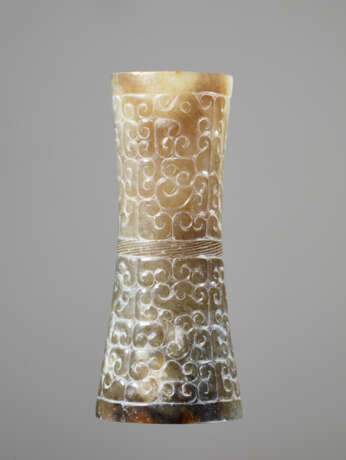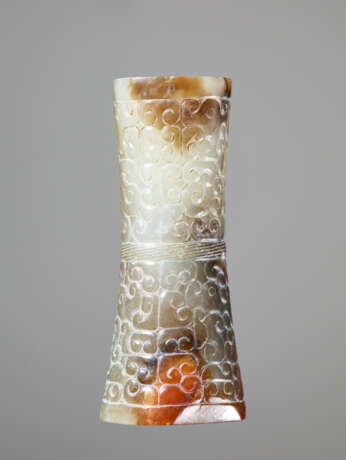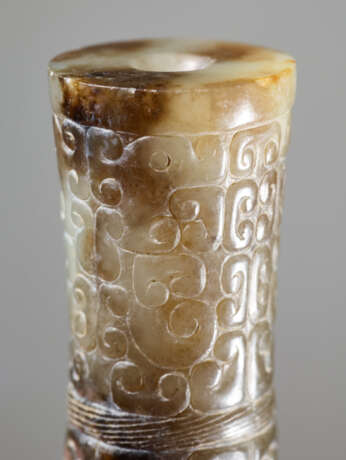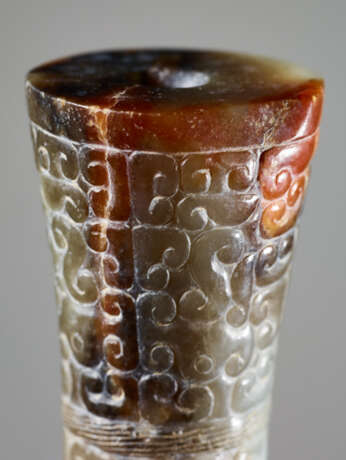ID 7367
Lot 29 | A HOURGLASS-SHAPED BEAD IN GREEN JADE WITH A DENSE PANHUI PATTERN OF SWARMING CURLS
Estimate value
€ 2 400
蟠虺紋漏壺形玉管 - 東周時代, 公元前4世紀-前3世紀
Length: 5.9 cm
長 5.9 厘米
Hourglass-shaped beads like the present one were in use during the Zhou period, from the 8th to the 3rd century BC. The organization of the decorative pattern on this bead is similar to JAK917-027. The polished extremities are flat and bordered by two narrow, plain bands, while a third strip with incised lines, in the exact centre, separates the two sections that are covered with a pattern of swarming curls and stylized dragon heads (panhui蟠虺).
The jade is a mixture of light and dark green with some brown and various tones of amber that can be seen mostly at the larger end, where a tiny fragment of the jade had broken off, probably due to a fault in the stone. There is also a thin line of amber that runs halfway up the side. A conical hole pierced at each end runs vertically through the bead.
Literature comparison/Archaeological sites: Three comparable beads of similar shape in the Sir Joseph Hotung collection are illustrated in J. Rawson, Chinese Jade. From the Neolithic to the Qing, London 1995, nos.17:17 to 17:19. See also a similar bead of slightly later date published in F. Salviati, 4000 Years of Chinese Archaic Jades, Edition Zacke, Vienna 2017, no.241.
Expertise: Prof. Dr. Filippo Salviati
From an Austrian collection
奧地利老佔有
All jades in this catalogue have been professionally examined, authenticated and described by Prof. Fillipo Salviati. Professor Salviati teaches Chinese and Korean art at Sapienza University in Rome, in the Italian Institute of Oriental Studies. He is a world expert on archaic Chinese jades, having released multiple publications and being cited by renowned auction houses such as Sotheby’s.
| Address of auction |
Galerie Zacke Mariahilferstrasse 112 1070 Wien Austria | ||||||||||||||
|---|---|---|---|---|---|---|---|---|---|---|---|---|---|---|---|
| Preview |
| ||||||||||||||
| Phone | +00 4315-320 452 | ||||||||||||||
| Fax | +43-1-5320452-20 | ||||||||||||||
| Buyer Premium | 27.000 | ||||||||||||||
| Conditions of purchase | Conditions of purchase | ||||||||||||||
| Business hours | Business hours
|






